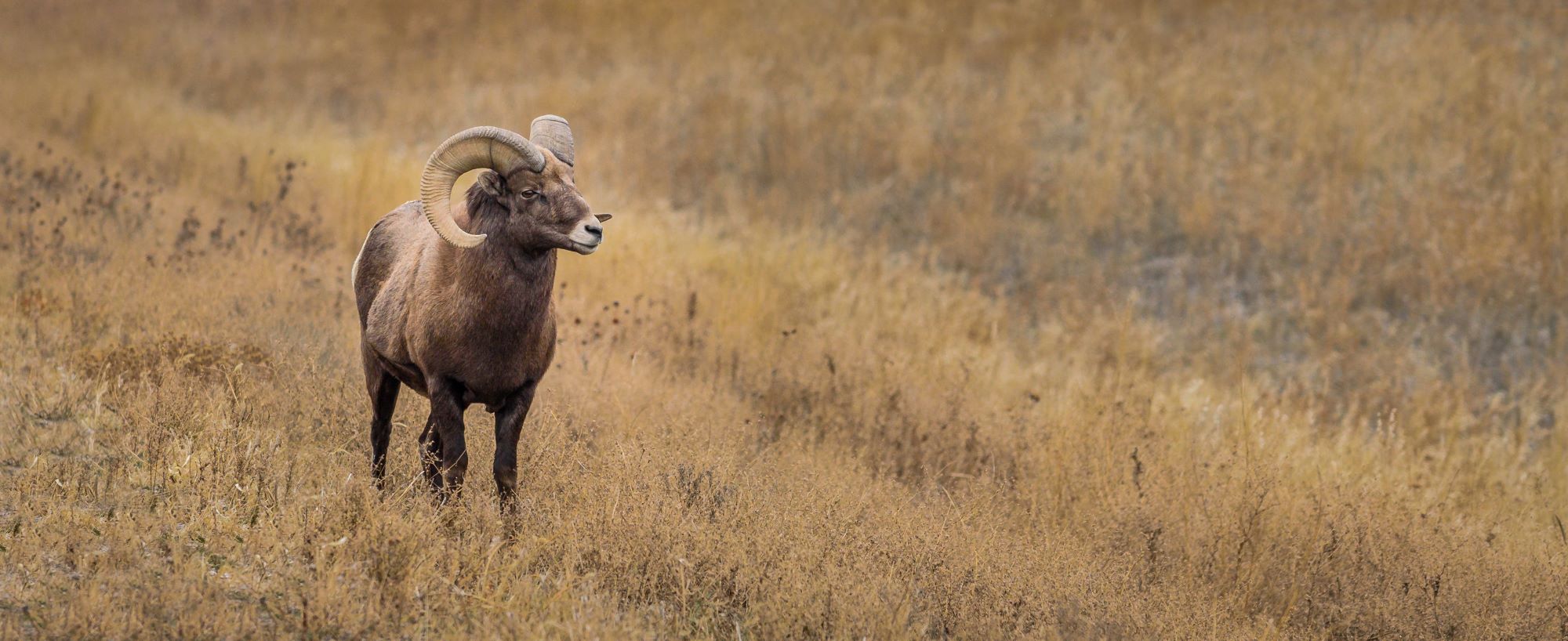
Rocky Mountain Bighorn Sheep in Utah
The Rocky Mountain bighorn sheep, a subspecies of the North American bighorn sheep, holds a special place in Utah's wildlife landscape. These majestic creatures, scientifically known as Ovis canadensis canadensis, are most often found in the steep, rugged terrains of Utah's mountain ranges, including the Uintas and parts of the Rocky Mountains.
Physically, Rocky Mountain bighorns are impressive. The rams (males) are particularly known for their large, spiraled horns, which can weigh up to 30 pounds and serve as a symbol of status and a weapon used in battles for dominance during the mating season. Ewes (females) also have horns, but they are shorter and less curved. Bighorn sheep have a stocky build with a thick brown coat and a white rump patch, which aids in camouflage against the rocky environments.

Bighorn sheep are well-adapted to their mountainous habitats. Their split hooves with rough pads provide excellent traction on steep, rocky surfaces, allowing them to navigate seemingly precarious terrain with ease. This adaptation is crucial for accessing escape routes from predators, foraging in steep areas, and finding isolated resting places.
Diet-wise, Rocky Mountain bighorns are herbivores, feeding on a variety of grasses, forbs, and shrubs. Their diet changes seasonally, depending on the availability of different plants. In the harsher winter months, when snow covers much of their grazing areas, they often descend to lower elevations to find accessible food.
The social structure of bighorn sheep is characterized by segregation of sexes outside of the breeding season. Rams often form bachelor groups, while ewes, lambs, and yearlings gather in nursery herds. The breeding season, or rut, typically occurs in the fall. During this time, rams engage in dramatic head-butting contests to establish dominance and gain mating rights with the ewes. These clashes, which can be heard echoing through the mountains, are a powerful display of their strength and resilience.
In Utah, the population of Rocky Mountain bighorns has been a conservation success story. Historically, their numbers declined drastically due to overhunting, habitat loss, and disease. Conservation efforts, including reintroductions and careful management, have helped their populations rebound in many areas. These efforts involve habitat preservation, monitoring of health and population dynamics, and sometimes, controlled hunting to manage population sizes and genetics.
Despite these successes, challenges remain. Bighorn sheep are susceptible to diseases, particularly those transmitted by domestic sheep and goats, such as pneumonia. Habitat fragmentation and human disturbances also pose significant threats. Ensuring the long-term survival of bighorn sheep in Utah requires ongoing conservation efforts, including habitat protection, disease management, and research into their ecology and behavior.
In summary, Rocky Mountain bighorns in Utah are not just a symbol of the state's wilderness but also a testament to the efforts in wildlife conservation and management. Their presence in the rugged mountains of Utah is a beacon of successful species recovery and a reminder of the delicate balance in preserving natural ecosystems for future generations.